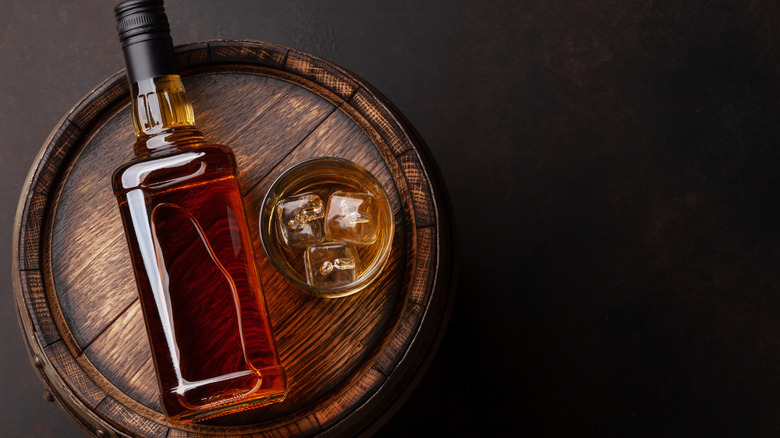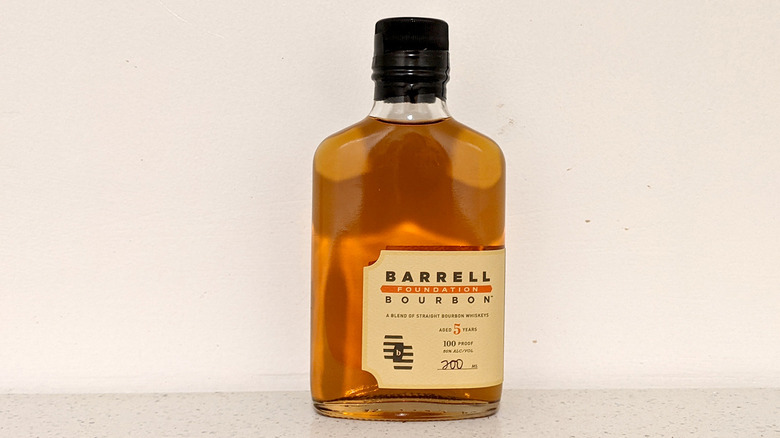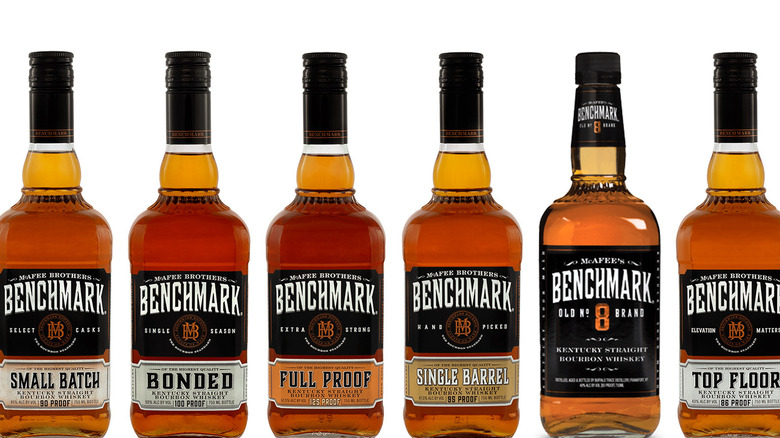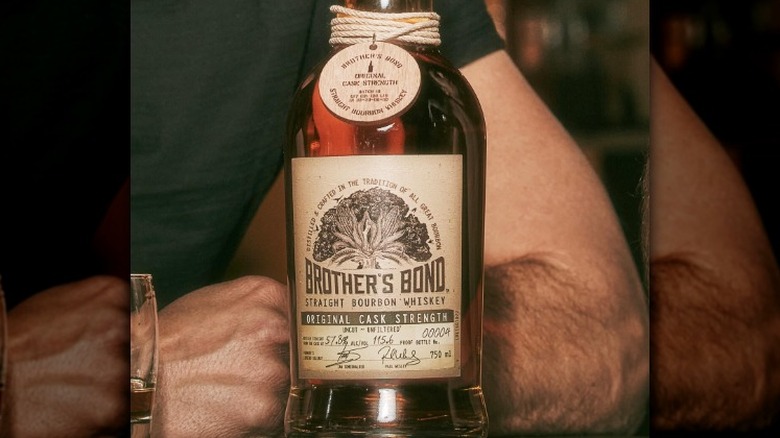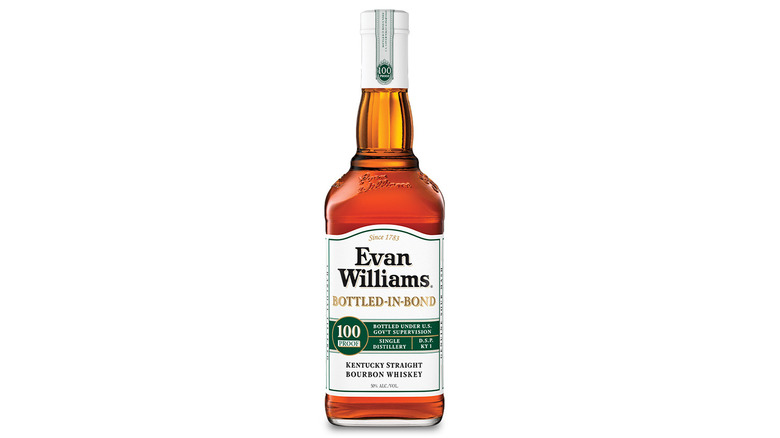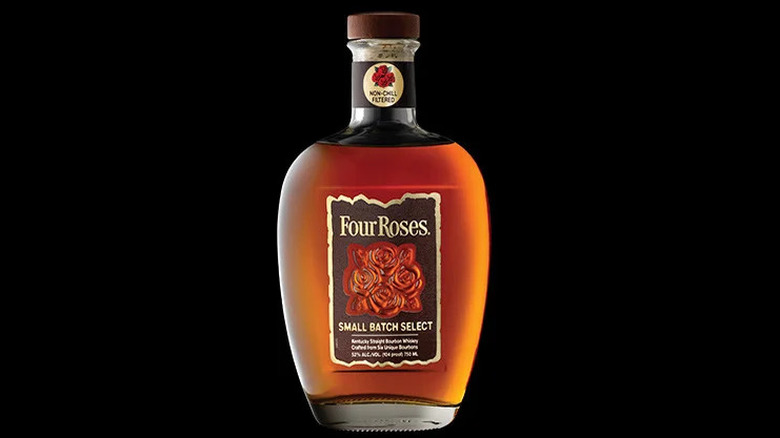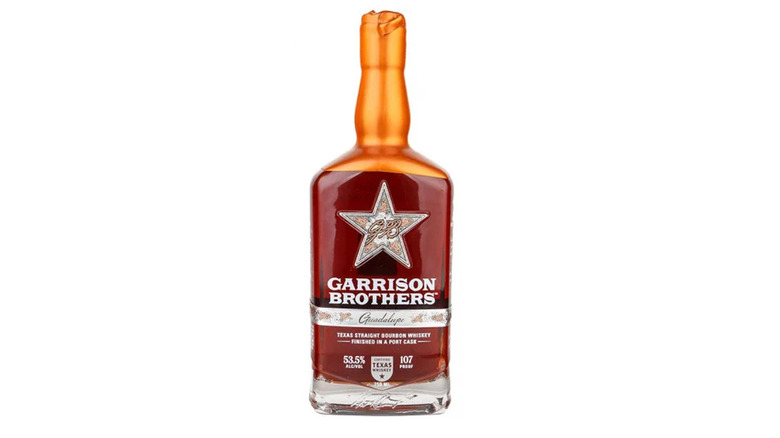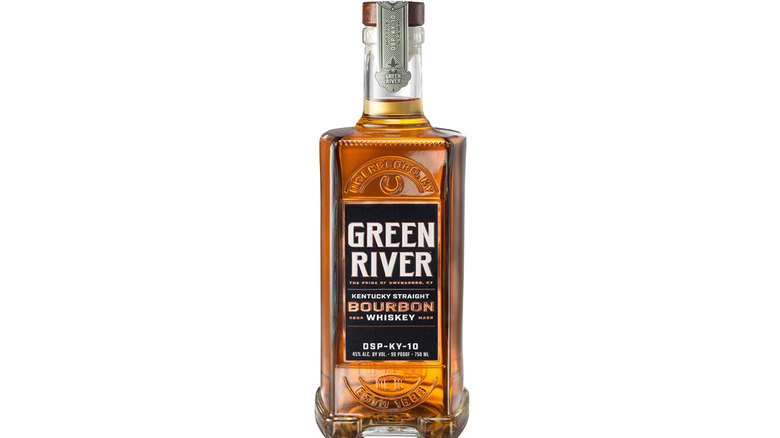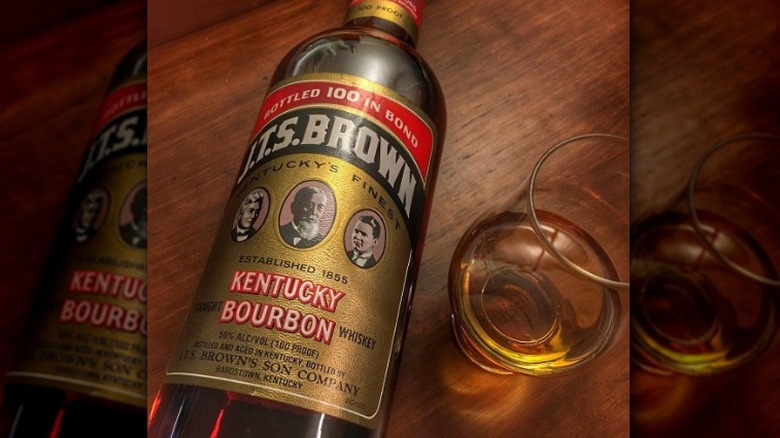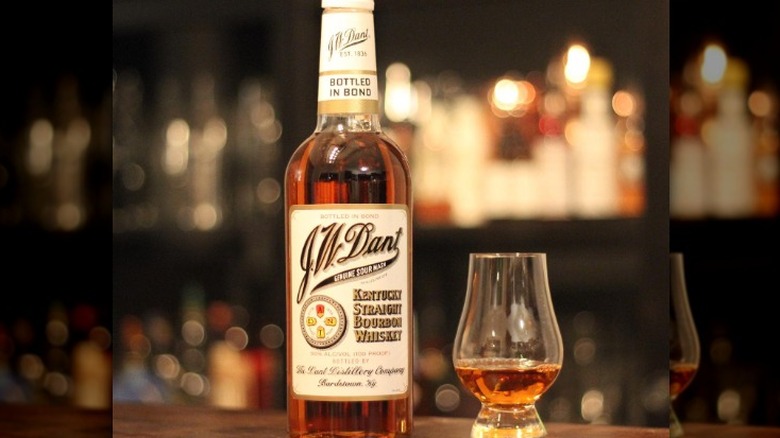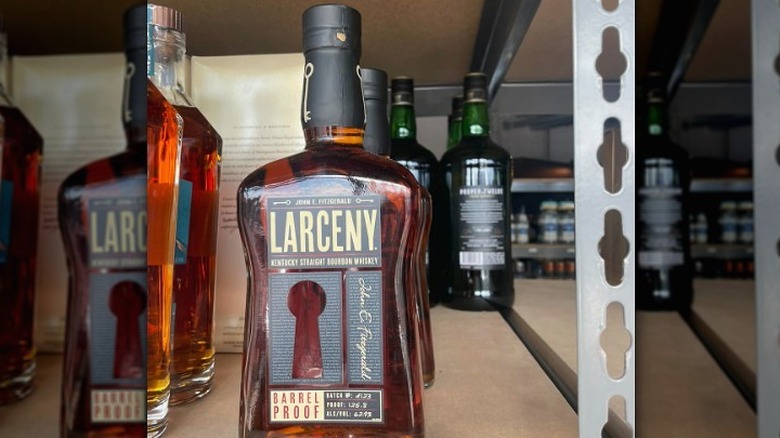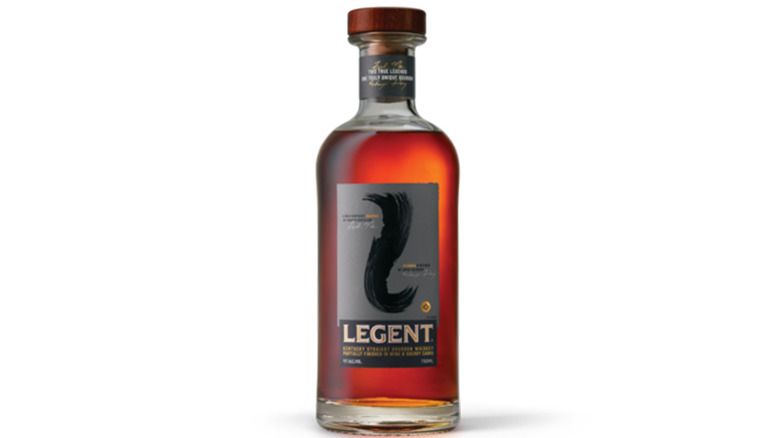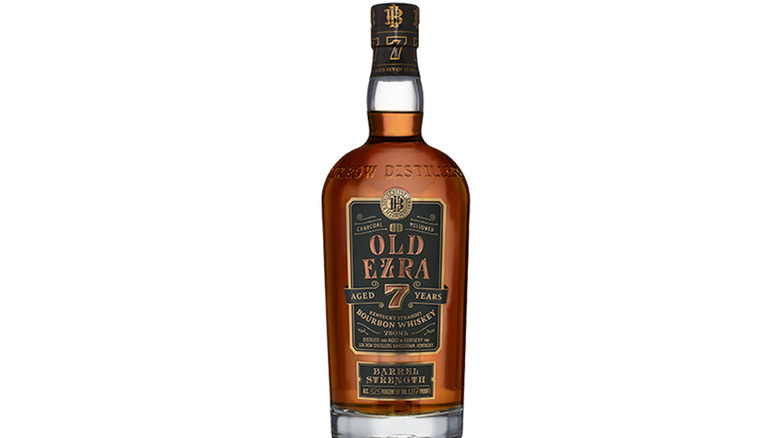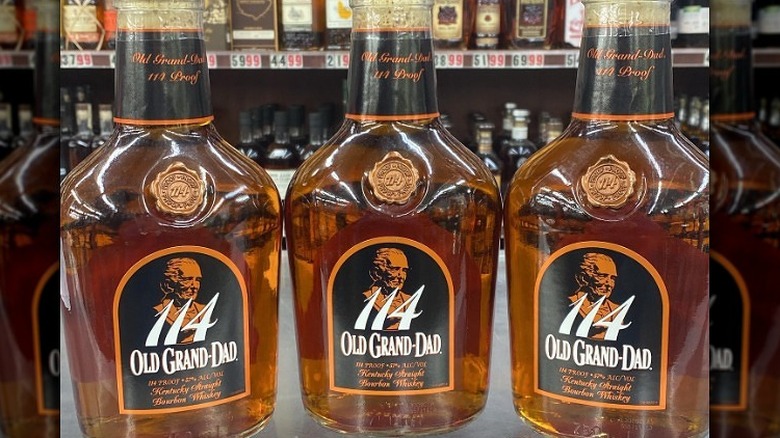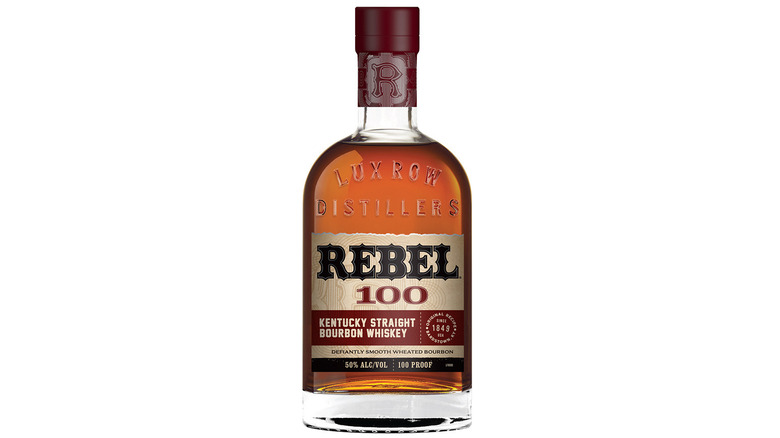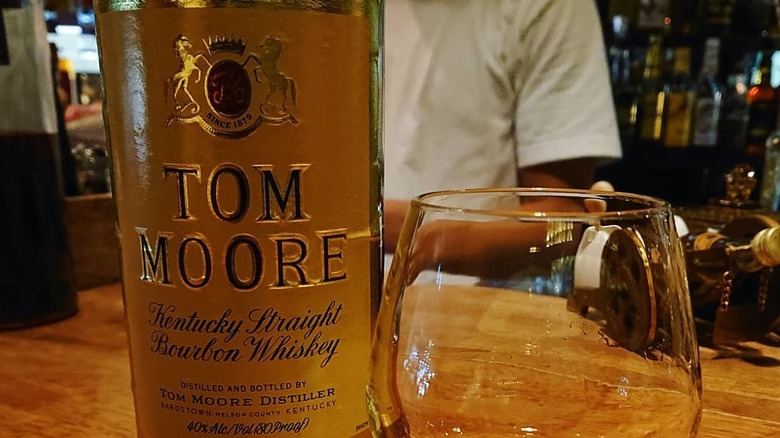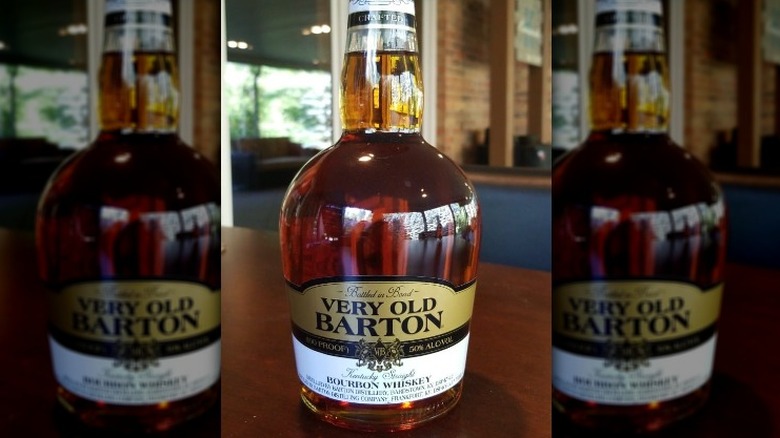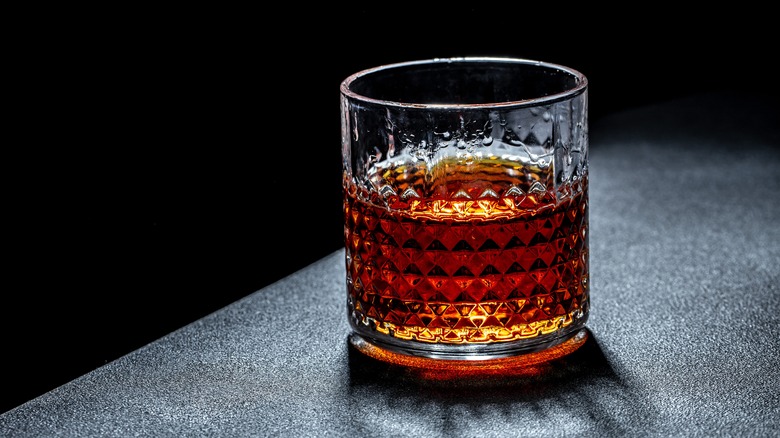16 Underrated Bourbons You Need To Buy
It's just a fact of life: Street eats will always satisfy so well they seem underpriced, while fancy-tasting menus had better bring their A-game every night to earn their reputation. So it is with bourbon: The four-figure purchases face almost-impossible odds to live up to the reports, even while so many well-deserving whiskeys go unrecognized for their quality.
Well, not today, drinking buddies. There are some bourbons out there that we think deserve more love than they get, whether that be better appreciation in the scene or just wider recognition of what real whiskey fans already know by the dilettantes. Our first criterion was, "People should be talking about this more" — although, that could mean, "Everyday drinkers should know what whiskey lovers do," or "Connoisseurs should give this bargain more attention."
Some of these whiskeys are easy to obtain, others are rare, and all are simple choices to make when you get to the liquor store. We promise you they'll be worth at least what you paid, and often cause you to think you would have shelled out double the cost or more. Here, in alphabetical order, are the sleeper bourbons to put on your shelf ... if you can.
Barrell Foundation
Barrell gets plenty of love, but you kind of have to be a fan, as it's not for everybody. The widely sought and touted New Year bottles either wow some or are just not what others are looking for, but it's hard to imagine anyone who can't get on board with the Foundation blend. Made with whiskeys aged between five and nine years from the big production states (Indiana, Kentucky, Tennessee, and ... Maryland?), Foundation aims to be "a versatile, easy-drinking, full-flavored bourbon perfect for enjoying neat or over ice," per Barrell's website. And honestly? Mission accomplished.
Barrell sent us a bottle to review, and there's a strong whiff of cherry from the bottle that's more citrusy in a Glencairn glass. Cantaloupe joins to make this a fruit salad, but with a drop of water, it turns chocolatey. The flavor sizzles a bit, but through and through, you could drink this Cheerwine of whiskeys all day, as it offers that rarest thing: a pleasant astringency. If you find it too sweet, a drop of water mitigates it by bringing out the oak, but we find it even better on the rocks, where bitterness vanishes and cocoa emerges. But really, there's no need to mess with a thing. It's perfect neat.
If you want to convince someone of how good Barrell — or blended whiskeys in general — is, this is the right introduction for either or both. And good news: It really will be the foundation for future Barrells. Barring special cases, everything to come runs through here, including the 2024 New Year drop.
Benchmark
Yep, the whole line. The label got a bit of a redo in 2020 that went under the radar due to *emphatic hand waving* everything. So while Benchmark No. 8 was your don't-think-just-do handle for sipping or mixing, you might want to compare each of these very affordable $25 or fewer bottles to see how you like to employ them.
But if that review's too biased for you, consider the recommendations of YouTube's whiskey aficionado Jeremy Siers, whose good taste in whiskey extends to Bruichladdich in a shared preference with our list of the best single malt Scotches to try. 2023 saw Siers review the entire Benchmark line-up, declaring the Small Batch the winner but also recommending Full Proof. Siers also made the excellent point that Benchmark shares its mash bill with Stagg and the flagship Buffalo Trace label. As the whiskeysphere runs out of candidates for the next "Poor man's Pappy" and Stitzel-Weller surplus blends, perhaps the better question is, "Where can we get some poor man's Stagg and Taylor?" Benchmark is that. Not bad for $12 to $25.
Brother's Bond Cask Strength
The fact that this delightful bourbon wouldn't exist without "The Vampire Diaries" is trivial in the shadow of how much it pleases. Actors Ian Somerhalder and Paul Wesley are two bourbon lovers who decided anything worth doing well was worth doing obsessively.
The standard version of this MGP-distilled blend of three mash bills is ardently 65% corn-based, solidly high rye at 22%, and followed by a murky split between wheat and barley. The 57.8% ABV is lighter than you're probably used to, but it's also punchier and easier to drink. This, according to Brother's Bond, is by design. All in all, it's a whiskey even snobs can't scorn, with the Cask Strength seemingly existing to circumvent doubters' objections. (A rye is on its way.)
A Cask Strength bottle presents a mild and sweet nose with a trace of whipped cream, belying the 115.8 proof. Its legs are thick and overlapping. The viscosity takes its sweet time to congeal, even forming drops retelling its voluminous body. It's like a bite of bread in all the pleasant ways before the pepper turns to a rising burn in a rye crescendo. All that, and Somerhalder told Esquire that its production is fanatically devoted to carbon sequestration, which makes it easier to buy a bottle in good conscience.
Evan Williams Bottled in Bond
Again, the whole Evan Williams lineup is a deal for the price, tasting better than its competitors while charging half as much — something we went on record as saying back in our ranking of the best American whiskey brands. But if you really want to upgrade your go-to, small batch and single barrel are minor price bumps for big boosts in satisfaction.
There was a time when we would have recommended you get your hands on the green label, which delivered a lovely experience despite a slightly lower ABV than black. Sadly, it's all but vanished (according to the Heaven Hill warehouse fire, if you believe Reddit accuracy amid a black vs. green debate). And Single Barrel is relegated to Bardstown and a few Kentucky liquor shops these days.
Where's that leave you? With your choice of 1783 Small Batch or Bottled in Bond white label. Online reviews may help you make your choice between floral and grain-forward, but if you want our pick, we'll pour a BiB and dream of getting our hands back on green one day in the future.
Four Roses Small Batch Select
A perennial pick for underrated bourbon by the truly experienced aficionados, no matter which neck fills your fingers, Four Roses still leaps forward once you cross into Small Batch Select and Single Barrel. While Single Barrel is inarguably refined — even reactively impressive at first sip — Small Batch Select is in a Jan Brady position between people talking up regular Small Batch and the primo offering. For our money (which is almost the same expenditure as the broader Small Batch), our pick of Small Batch Select is a big leap forward at not much deeper of a cost. Or, if you look at it from the Single Barrel perspective, a discount on nearly the same experience.
We ranked all the current Four Roses offerings, including the really challenging and pricy to acquire annual bottles, but if you're not looking to splurge a lot of money and even more time on obtaining the 2019 Limited Edition Small Batch, these two will serve you well. Although only one made it onto our list of best bourbons for an old fashioned.
Garrison Brothers Guadalupe
Finally, a bit of a shift in our recommendations. Garrison Brothers are widely admired by those who try its wilding-out expressions, but the problem is that not too many folks have. It's pricier than a lot of other bourbons, and Texas whiskey just hasn't made quite the dent in Kentucky's market share yet. So while this distillery commands the esteem it deserves, not enough whiskey drinkers extend their radar far enough to ping it. Let that change with the release of the 2023 Guadalupe, which you'll either have to hastily book a flight to grab or pay airline-equivalent prices to acquire on Caskers.
What's that? Too rich for your blood? Okay, pick up the Small Batch for $70 or so on Drizly. You fell for the anchoring sales technique, and now you're singing the praises of Texas whiskey. The ol' Garrison ladder worked again. But if you're willing to be convinced, some fans have extolled the two-fisted balance of Guadalupe's high viscosity and high proof as negating each other's worst tendencies while extenuating virtues.
Green River
Green River's a newer label, but it's been coming out of the gate strong. Like Brother's Bond, it's big on the corn while strong on the rye, though you won't find any wheat rounding out the barley here. There's no age statement, but the company says at least five years in the barrel.
The current incarnation has been compared to the pre-release bottle by some, who've found it's still got a lot of complexity for a young bourbon. Its selling point, though your mileage may vary, is the chocolate and mint beneath the fruity notes. While detectable in this aspect, a young bourbon might be slightly less complex. Still, at $35 or so, you can afford to be wrong. Though that's unlikely, given the respect and praise sent its way, placing Green River at the forefront of bourbon debutantes. No wonder respected reviewers are emphasizing Green River's value as a safe bet to satisfy and possibly a contender for your favorite everyday pour. Look out, Evan Williams.
J.T.S. Brown Bottled in Bond
You'll have to look for J.T.S. Brown bourbon since one glance at Total Wine will show you it doesn't often stray far from Heaven Hill grounds. At the almost-always appreciable 100 proof and six years aging, it can be surprisingly delicate if not volatile, but it's cheaper than cheap at $10, and yet drinks like something three or four times the price. But that's assuming you can get it at the price since word has begun to leak out, and the limited availability makes it something of a commodity for people seeking good bargains on quality sipping rather than storing.
Tack on that it is dang hard to even find out if this bourbon is still in production (Heaven Hill's website doesn't list it), and you might be looking at paying $40 and up. Whether that's worth it, you'll have to ask one of those grouchy old collectors coveting their precious supply, but the real question is whether you can trust their answer. At under $20, though, it's no question to grab it, just whether you should open it or cling onto a possibly vanishing piece of the Kentucky bourbon landscape.
J.W. Dant
J.W. Dant is a bottled-in-bond bourbon for under $20 (although inflation might be playing havoc with that price) from your friends at Heaven Hill, whose own Bernie Lubbers gushed about it to The Bourbon Review. Surveyors can't rave enough about this younger edition of the Heaven Hill recipe. Low cost, bonded standards, and a reliable recipe? That's a convincing combo.
Lubbers is not alone, as the once-flourishing label has maintained a devoted fan base among those who can find it: Kentuckians, mostly, though some lucky Hoosiers might spot a bottle in Indiana. You New York tristate region types might also spot it, and it's a prime example of an underpriced classic delivering above its price point.
Don't confuse the Dant label with the Dant family-produced Log Still whiskey made by his descendants (but hey, if anyone wants to put a bottle of either in our hands, we're happy to do a taste test comparison). The Lane Report outlines the dirty legal details if you want to know about these vying brands. But someone, please explain the blended Scotch edition to us.
Larceny Very Special Small Batch
If we're being honest, Larceny overall is not a personal favorite here. A lot of better wheat bourbons may be had for a few dollars more. (Maker's!) But we don't set the market; we just report on it, and folks love this bottle. Plus, it's punching above its price point. But given that we just praised two other Heaven Hill bourbons, we've got credit at the bank. At the end of the day, differences in taste are part of what makes the whiskey world wonderful. Besides, Larceny ladders up to Old Fitzgerald BiB, so that mash bill needs no public defender.
Anyway, while much of this list is underpriced along with its under-appreciation, this bottle lands right on its perfect price point at $30. And lucky you, Caskers has it for $23. And given that people are chasing the Barrel Proof batches to the point where they're catching up with the current expressions, selling a nearly-as-precise blended bourbon under $30 feels tantamount to an oversight. What's the worst that happens? You get a reliably versatile sipper/mixer for barely $20. Gedouttaheah.
Legent
Haters dismiss Legent as just Jim Beam plus some finishing barrels. Enthusiasts say the same, except happily because that's what this is. When a generational master distiller like Fred Noe curates barrels for Suntory's master blender Shinji Fukuyo, that's a collaboration for the ages.
More to the point, this is a good whiskey at a good price, and pooh-poohing it is proof that it belongs on this list of underappreciated pours. Some might think you're getting away with murder if you can manage to not only find a bottle but also pick it up under $40, though we still appreciate the bottle that arrived for us to review as though it were hard-won. Legent has a beautiful nose like sweet hay and honey. It's light enough to inhale freely at 94 proof. You'll get the sherry best if you exhale and then inhale quickly. Those wine/sherry casks soften and sweeten Legent's easygoing taste. The only sharpness is near the end when the oak comes in. Depending on your palate's pH, it might announce itself louder than you'd like.
Old Ezra Barrel Strength 7 Year
In a list ripe with bottles in bond, be a barrel strength to stand out. Old Ezra goes almost entirely in on corn at 78% of the mash bill, then lets barley and rye pick up the scraps. The result is sweet and smooth. Despite its moderately advancing age, it keeps the oak at arm's length, making it a great buy for your friends who don't like a nutty aspect in their evening beverage.
The last time we looked at a Luxco bourbon, we recommended the exquisitely elusive Rebel Reserve 12 among a dozen rare bourbons worth tracking down. But if you don't want to take a trip to Lux Row Distillery, you'll have a much easier time enjoying Old Ezra's upscale option to the standard 99 proof. Heed our and other enjoyers' advice to distinguish this from the pre-existing 7-Year 101 proof and get the preferable Barrel Strength. If you spot a bottle that comes with a $10 coupon baked into it, you've really got nothing to lose going for the elevated experience.
Old Grand-Dad 114
Here's some stalwart proof (pun very much intended) that we didn't set out to compose a bottled-in-bond roundup. Even appreciators of Old Grand-Dad don't talk up the 114 enough, favoring the bonded 100. So that expression receives its due.
But what about the higher proof? When the price span of a label that doesn't get enough love caps out this low, go high, we say. Jim Beam recommends mixing the lower expressions into the best beverages to mix with whiskey, but the 114 is meant to be enjoyed on its own merits. If you already like Old Grand-Dad, upping the ABV is a no-brainer. Not to mention, most $25-and-under bourbons aren't going to show up this strong, even if you like their flavor.
So what's it like? Like your granddad, it's bitter at first but quickly reveals a sweet side as you get to know it. Also, both granddads enjoy a short rest before they're ready to party. Aptly named, we think.
Rebel 100
You didn't think we'd let the Rebel escape, did you? Rebel 100 is further evidence that the centennial mark is happy ground for whiskey to do its thing. It's one of the few wheaters, or at least wheated this strong at 20%, in this list. But you've got to like oak to get into it. Rebel's not for everyone. Those who can handle wood, heat, and spice are rewarded with a lot more nuance than you'd think could successfully hide out under all that. Rebel tastes are hiding here, for sure, such as salted caramel, mint, and honey. Perhaps all these formidable flavors in a battle royale are what keep Rebel 100 just a bit below the notoriety it should have achieved by now.
But it's getting there. Some have previously weighed in against standard Rebel before assessing this edition as the whiskey it could recommend. If it's not going to become too many folks' favorite, it's still a cheap whiskey with a not-cheap presence, which makes it handy in many situations.
Tom Moore Bottled in Bond
Sazerac doesn't send this everywhere, but if you find it, it's a banger for the price. Sneaking out of Barton 1792 Distillery to crawl southwest, it seems to linger mostly around Kentucky, Texas, and Louisiana. But good luck finding extant info about this bottle anywhere outside of Reddit threads, in which users tend to review it favorably for a banana and maple flavor.
If you do decide to consume it, how you do so doesn't appear to matter. Mix it, drink it, and don't worry about it; you've got a cryptozoological specimen worth nabbing if you even see it. Now can someone confirm this is the same mash bill as the swanky Thomas S. Moore bottles? Are we looking at a W.L. Weller vs. William Larue Weller situation here? It is so interesting that this was in production as recently as just before the pandemic, if not right now, but so hard to find for its entire existence, even in a decades-old Straight Bourbon thread. Color us intrigued, if not fascinated, with what's going on with this well-regarded bottle.
Very Old Barton Bottled in Bond
For people who truly enjoy the hunt, we come to Very Old Barton, another Barton 1792 escapee. For some, this one ranks this one all the way up, particularly when considering the rock-bottom price sticker. Similar to Tom Moore in flavor, it veers between strong sundae-topping flavors and is reported as chocked with herbaceous and meaty grains. That's a full meal!
Other appreciators agree, depicting VOB, if you scout it in the wild, as the epitome of this article's mandate: underappreciated, undervalued, under-mentioned, and above the par for a standard-issue bourbon. Perhaps most to its credit, the Very Old Barton compared with a Four Roses Small Batch Cask Strength as selling for quadruple as much. That's pretty much the plot of "Rocky," right? A scrappy nobody pushes their way to the top on the strength of will to nobly prove that, though it might have lost, it's nobody's loser. It'll make your favorite bottles work for victory.
Then again, if you get to try it, VOB might prove to be the "My Cousin Vinny" of bourbons: A little wacky, making its way on a shoestring budget, and winning its case with a persuasive argument.
Methodology
As you can see, we tried to mingle the results between the undervalued, the undermentioned, and the seldom encountered bourbons to give you the best odds of finding a prize worth taking home from almost any liquor store. Some you'll find anywhere you look, but we feel they don't receive due appreciation, either from the cognoscenti (let's face it, hobbyists can be snobby) or the casuals who have overlooked them in favor of the common basic labels. Other whiskeys on this list take a little hunting to either learn about or find in the wild. But all of them meet or exceed their priced value. While tasting is a subjective experience, trying any one of these bottles will give you a solid idea of what you do like, based on how they hew from the standard.
There are plenty of other underrated bottles out there, but we felt these best represent the mix of options available to the casual drinker looking to score a deal.
